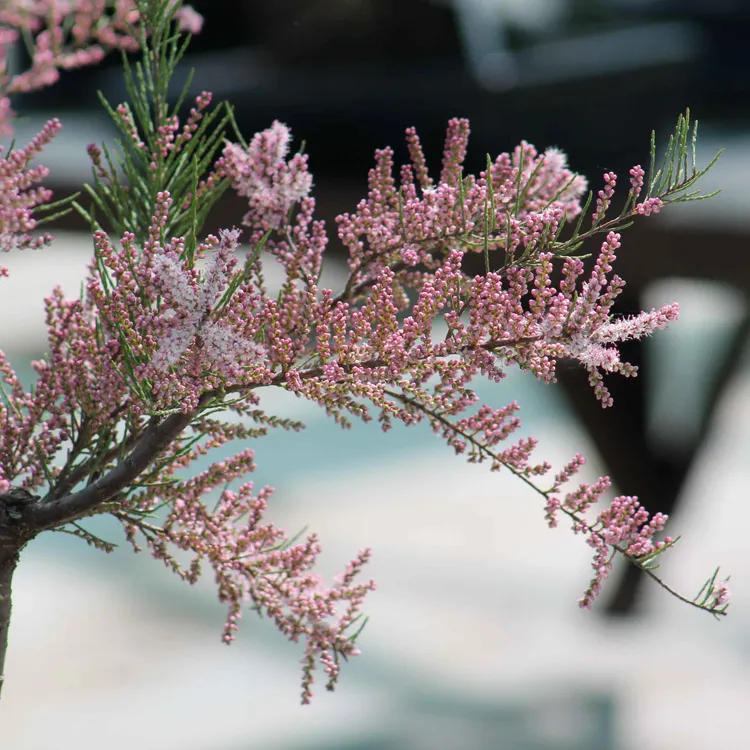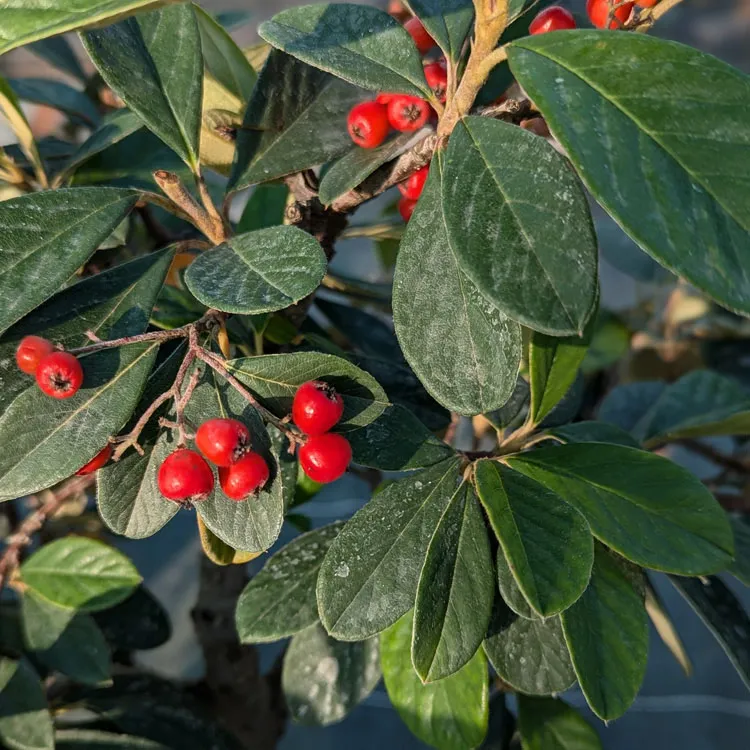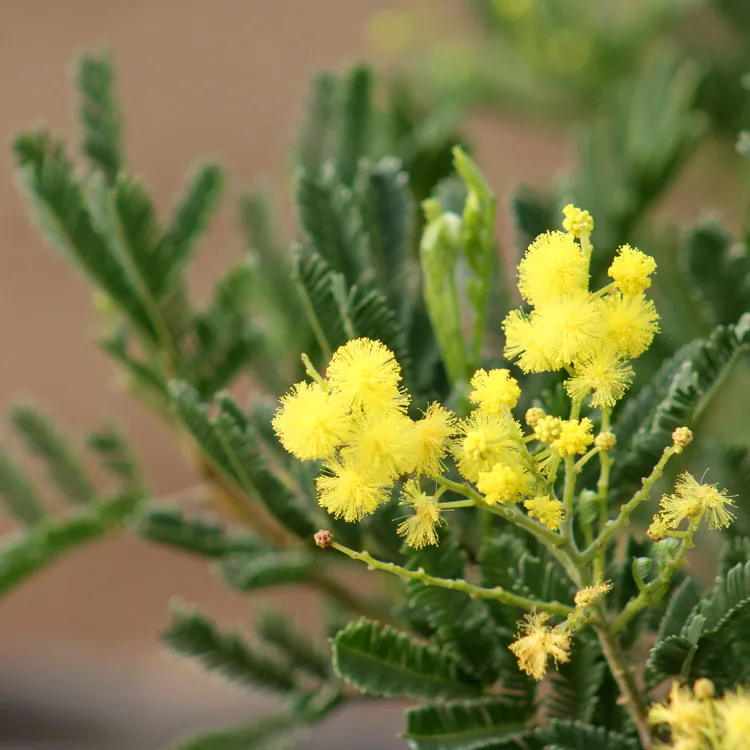The cotoneaster is very popular in bonsai and appreciated for its small leaves and small colorful berries. The possibilities of shaping are very numerous, its growth rapid; In just a few years, you get beautiful, dense foliage trays. It is really an ideal tree for those who want to learn the different techniques of pruning and growing in bonsai.
A shrub of the Rosaceae family
The cotoneaster is a species native to the mountainous and temperate regions of Asia, where it rapidly colonizes slopes. There are more than 200 varieties that are differentiated by the size and shape of the leaves, the color of the flowers and berries.
The foliage is evergreen, semi-deciduous, or even deciduous depending on the varieties and the climate in which they are grown.
The most commonly used varieties in bonsai are:
- Cotoneaster 'Horizontalis', with rounded leaves just over a centimetre long, pink flowers in spring and bright red berries in autumn;
- Cotoneaster 'Microphylla', which has very small, dark green leaves, white flowers followed by scarlet-red berries.
Unlike pyracantha, which is part of the same family, the cotoneaster has no needles, which makes it more pleasant to work with (especially when you need to apply a ligature).
Young shrubs have a brown trunk but the older they get, the more grey the bark will become and crack, giving a beautiful patina.
In nature, they are shrubs that have a rather prostrate shape and can extend for several meters. When worked in bonsai, the cotoneasters are given a tree-like shape, removing the low branches in order to clear the trunk.
What we appreciate about this species is that it opens up many possibilities for shaping, including magnificent waterfalls, or even compositions where the roots enclose a rock (SEKIJOJU style).
Species with very small leaves are not that common, and the 'Microphylla' variety is perfectly suited to creating SHOHIN bonsai, or even MAME. As pruning progresses, the branches become very thin, forming very dense vegetation plateaus.
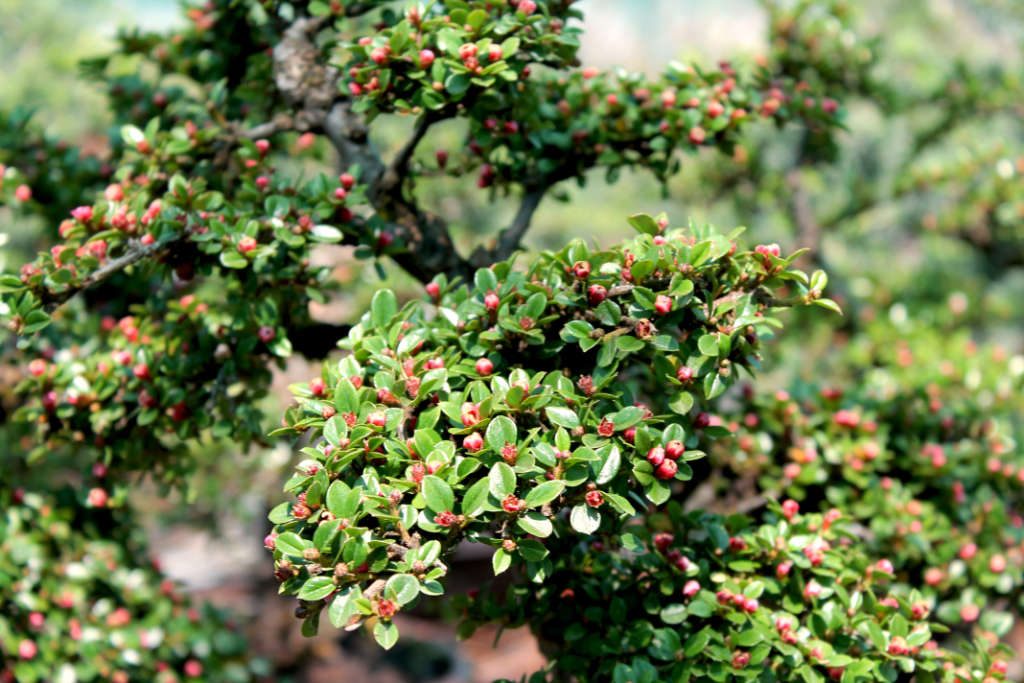
How do you care for a Bonsai Cotoneaster?
Exhibition
It is a shrub that loves the sun, but at the peak of summer it will also appreciate being in partial shade, especially for smaller bonsai as the substrate tends to dry out very quickly.
It is an outdoor bonsai, with good hardiness, that can stay outside all year round. But protect it from heavy frosts and wind, i.e. when the temperature drops below -5°C.
Watering
The cotoneaster loves water! Its substrate must always remain moist, while avoiding excess water. So water copiously as soon as the soil surface dries. In summer, don't ask yourself any questions, water every day (or even 2 times a day in case of high heat, while keeping it in partial shade).
In winter, growth stops, and water requirements are reduced. This is a time when you have to be careful about excess water that can lead to asphyxiation of the roots. In this season, you won't often have the opportunity to water. However, you should be careful of long periods of rain; Don't hesitate to put your bonsai in a sheltered place for a few days, while the excess water in the pot drains naturally.
Repotting
Cotoneaster grows quickly, and a young plant will usually be repotted every 2 years. The more mature it becomes, the more repotting can be spaced out.
Repotting is done in early spring, and we use an agricultural potting soil composed of black peat, blond peat, topsoil, horse manure, pozzolana.
Avoid cutting too many roots, the Rosaceae family in general does not tolerate a drastic pruning of the roots. So avoid disturbing the root bread too much and don't go too deep into the heart of the root ball.
Choose pottery with a good depth so that the root ball doesn't dehydrate too quickly. Cotoneaster goes well with glazed pots.
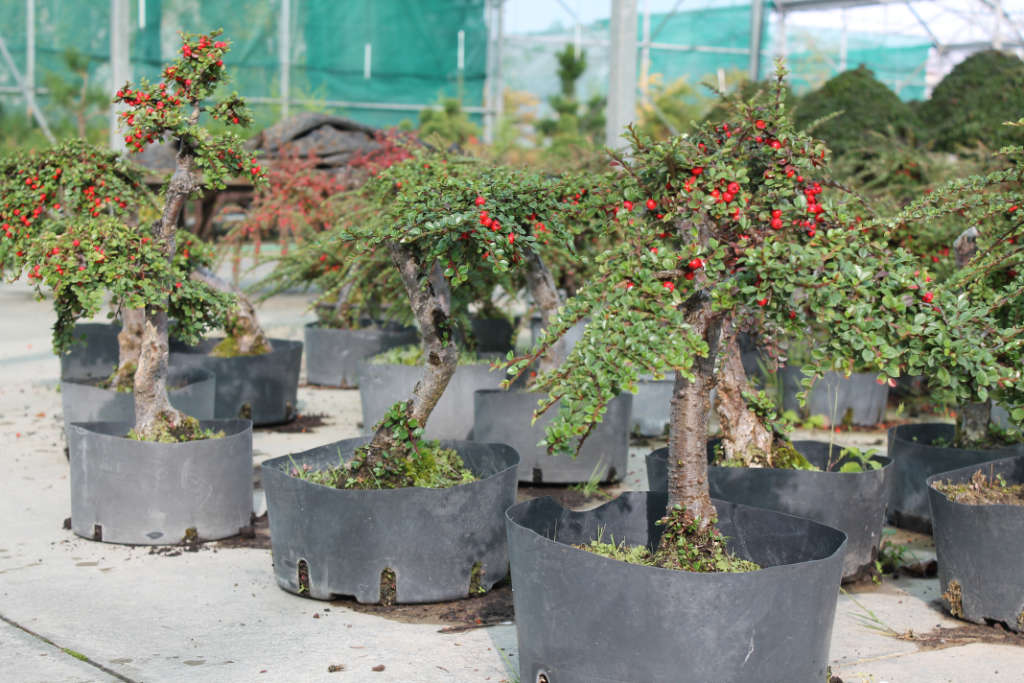
Fertilization
If you want your cotoneaster to grow and densified quickly, it is essential to provide it with enough water, and fertilizer on a regular basis, from May to October.
How do you prune a cotoneaster into bonsai?
When grown well, it is a fast-growing tree. From June to September, shorten the year's twigs to keep the shape and bud back. It is not uncommon to have to do 3 sizes, as it is such a vigorous species.
From September onwards, do not prune any more so that the tree can accumulate energy for the following spring. During the winter, you can prune the structure, shortening the branches that are too long and eliminating those that should not be kept (see: how to prune a bonsai).
The cotoneaster tends to bud easily backwards, including on the trunk. All these unnecessary shoots must be removed to prevent them from developing, to the detriment of the rest of the tree.
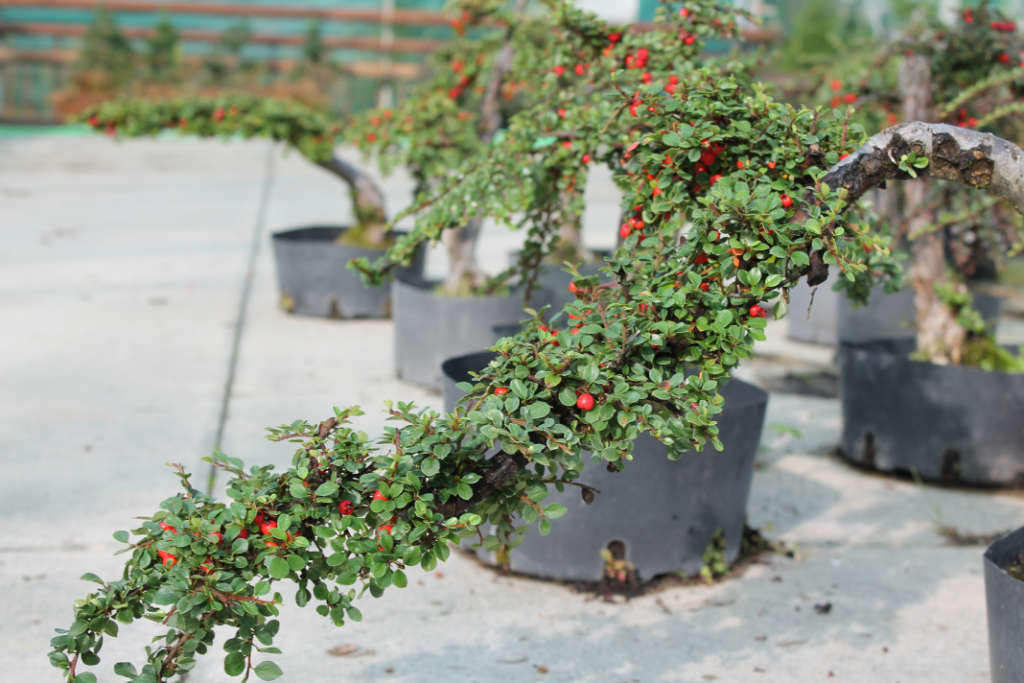
The branches of the cotoneaster are quite flexible in the first few years, so it is possible to tie them (with aluminum, not copper) to give them the desired shape. On the other hand, the bark is thin and brittle; It is absolutely necessary to prevent the thread from marking, otherwise you will have scars that will take years to disappear.


 Production of French Bonsai
Production of French Bonsai











































